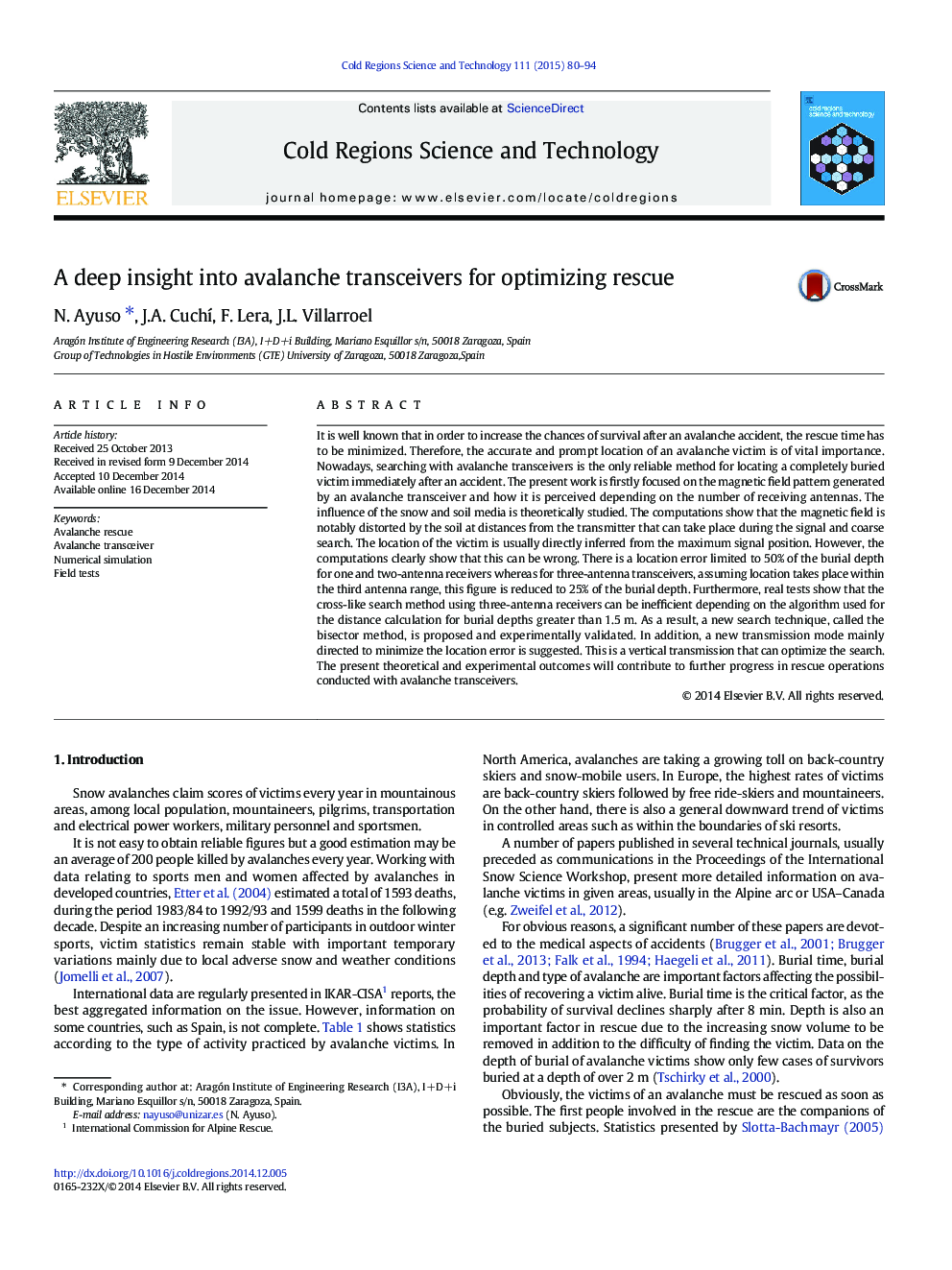| Article ID | Journal | Published Year | Pages | File Type |
|---|---|---|---|---|
| 4675725 | Cold Regions Science and Technology | 2015 | 15 Pages |
•We model the avalanche beacon magnetic field considering the snow and soil media.•The location error due to maximum signal offset is clearly shown for any receiver.•Field tests show that the cross-like search method can perform inefficiently.•A final search method improving the location accuracy is proposed and validated.•A new emission mode aimed to minimizing location error and search time is proposed.
It is well known that in order to increase the chances of survival after an avalanche accident, the rescue time has to be minimized. Therefore, the accurate and prompt location of an avalanche victim is of vital importance. Nowadays, searching with avalanche transceivers is the only reliable method for locating a completely buried victim immediately after an accident. The present work is firstly focused on the magnetic field pattern generated by an avalanche transceiver and how it is perceived depending on the number of receiving antennas. The influence of the snow and soil media is theoretically studied. The computations show that the magnetic field is notably distorted by the soil at distances from the transmitter that can take place during the signal and coarse search. The location of the victim is usually directly inferred from the maximum signal position. However, the computations clearly show that this can be wrong. There is a location error limited to 50% of the burial depth for one and two-antenna receivers whereas for three-antenna transceivers, assuming location takes place within the third antenna range, this figure is reduced to 25% of the burial depth. Furthermore, real tests show that the cross-like search method using three-antenna receivers can be inefficient depending on the algorithm used for the distance calculation for burial depths greater than 1.5 m. As a result, a new search technique, called the bisector method, is proposed and experimentally validated. In addition, a new transmission mode mainly directed to minimize the location error is suggested. This is a vertical transmission that can optimize the search. The present theoretical and experimental outcomes will contribute to further progress in rescue operations conducted with avalanche transceivers.
